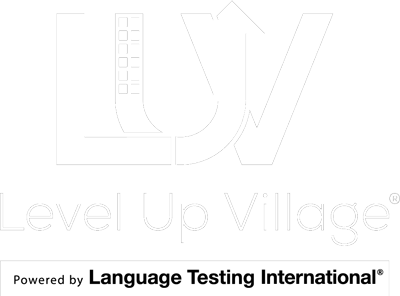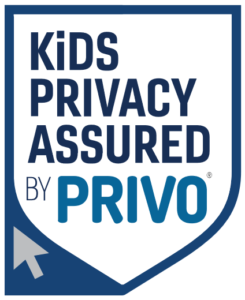Building Stronger Global Connections through International Student Collaboration
As educators, we’re constantly preaching the values of intercultural connectivity and collaboration to our students, to the families, and to each other; we tout the significance of experiential learning and praise the benefits of education outside the classroom, when suddenly it’s October and we’re wondering if we can get to Chapter 4 by winter break, while standardized tests and AP exams loom menacingly in the distance.
We all know where a road paved in best intentions leads; but what are the serviceable roads that will lead our students to connect with the outside world safely and comfortably, yet with enough structure and challenge to make it a worthwhile learning experience? Well, I think we’ve just come to the importance of virtual exchange.
The IIE’s “Open Doors” research shows that more and more students travel abroad each year, COVID statistics notwithstanding. And yet, the average for students in the United States is still one in ten. Obviously, as educators, and advocates for global citizenship and cultural empathy, this latter statistic should cause us to shift uncomfortably in our squeaky reclinable office chairs. One in ten? We can do better! We have to do better!
The solution to getting all of our students to build global connections is right at our fingertips: through the magic of virtual exchanges. Now, not only just some pupils can meaningfully collaborate with their international peers. In theory, they all can.
Expanding Research and Innovation through International Student Collaboration
The field of international student collaboration continues to grow, and while COVID and the economic crises of recent history may have stemmed the flow of students traveling abroad, it’s brought the interconnectedness of people across the globe to an all-time high.
And the generation of students we’re teaching is talking more about worldwide challenges than any generation before them. Geo-political challenges, climate change, energy crises: these are common topics on which not only are young people informed, but also in which young people have a real stake. It’s almost inconceivable that an educator would try and teach about a migrant crisis without connecting their class to someone who’s lived that experience; the developing role of women in middle eastern countries can now be taught and discussed by—you guessed it—women in middle eastern countries; and your students can hear about countries challenged by a lack of clean water from the people who actually struggle with this issue on the regular!
All of this couldn’t have been possible a generation ago, and it’s all now completely doable because of our burgeoning societal interest in telecommunication and telecollaboration.
Science fairs, book talks, foreign language practice—it’s all happening via virtual exchange now!
The way curriculums are innovating at the granular level continues to demonstrate that interdisciplinary courses and interconnective goals remain at the top of students’ academic bucket lists. One could argue that applying the same logic for our own pedagogical approaches will ultimately expand and innovate our programs in the same beneficial way.
Simply put, every single activity we do in a class, topic we cover in our curriculum, and philosophical inquiry we conduct with our students…why can’t we do those things internationally and collaboratively? How can we bring the relevant people, topics, and experiences right to their screens?
Well, thinking of it this way, the importance of virtual exchanges just skyrocketed!
Increasing Opportunities for Career Success through International Student Collaboration
Remote work: it’s here to stay.
Zoom Meetings: they’re a thing now.
Virtual conferences and online summits: yep, all happening.
We can’t escape it. The world our students will enter is going to look a heck of a lot different than the world we thought we were preparing them. However, the academic silver lining for us educators is that the skills we want them to learn are still relevant. Dare I say—now more essential than ever.
Will cultural competency play a factor in the leadership of tomorrow? You betcha!
Are our best and brightest minds going to be working together to solve challenges that afflict a wide spectrum of socio-economic categories of people in different parts of the world?
Of course!
Is it likely that our pupils will be working in teams with people from a variety of backgrounds, living across the globe, and in low context work environments where the standard of professionalism expects collaboration in the form of empathy and cross-cultural sensitivity?
I should hope so!
Everything we’re doing is setting them up for success in a global economy. Communicating electronically and setting up appointments, meeting people with genuine curiosity and cultural sensitivity, researching information and carefully avoiding the world of disinformation, and embodying the joyful and humble endeavor of becoming lifelong learners.
The importance of virtual exchanges lies here in these skills; it’s giving our students a safe place to practice what it is that we preach.
About Dan Pieraccini
Dan Pieraccini was born in Northern Italy, but was moved to the United States at the age of 6. Dan’s B.A. in English and M.A. in Italian literature have opened the door to over a decade of teaching high school and college students a second (and in some cases a first) language. It is likely that having traveled through 82 countries, 48 U.S. states, and three disputed territories somehow factored into the decision to make Dan Delbarton School’s first Director of Global Programs. In his spare time, he manages events at his local Elks Lodge, helps feed the hungry at a handful of food pantries, writes and performs rock and roll songs with his band Forget the Whale, plays in a Dungeons and Dragons game, and occasionally goes out to brunch.




